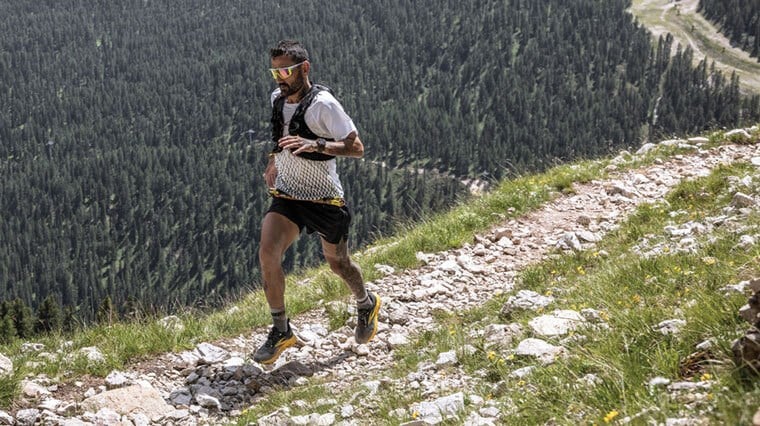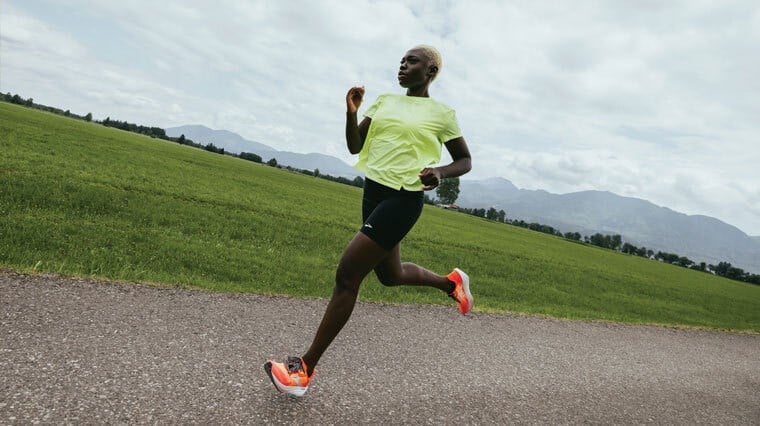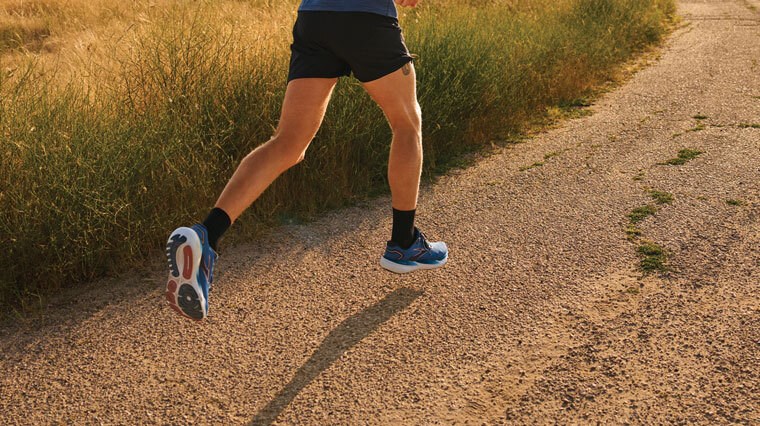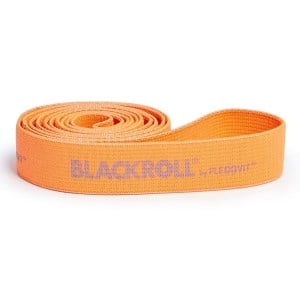How To Get Better At Running Uphill & Make It Easier

Running uphill is a challenge, but that’s why you'll love it (once you've caught your breath!). From road to trail, the hot burn in your calves after a hill climb reminds you that with regular training and a little tough love, you can run better. It’s all a part of both building your mental resilience and your muscles to adapt to a greater training load and improve your overall health and wellbeing.
By putting these beginner-friendly tips into action, you can improve your uphill running. You can make your running uphill struggle less of a battle, less daunting, build up speed and endurance, strengthen your heart and earn powerful calves, quads and hamstrings.
The Benefits Of Uphill Running
Ignite your motivation to seek out inclines, with these key performance benefits of uphill training:
- Uphill running is a fusion of speedwork and strength training, strengthening fast-twitch muscle fibres that are activated during short, explosive movements
- Uphill running improves the calorie-burning benefits of your runs compared to running on flat roads, making it ideal to help maintain a healthy weight and a fantastic option to pair with slow running
- Uphill running helps you identify and correct improper running form, helping you improve your running posture (e.g. avoid overstriding) when you take your running to flat surfaces
- Uphill running can improve your VO2 max (how efficiently your body uses oxygen during physical activity) and resting heart rate, improving your overall health and running performance
- Uphill running can boost your confidence, self-esteem and mental resilience
15 Uphill Running Tips For Beginners
1. Prepare your muscles by warming up

Pre-run dynamic (active) stretches and a 10 - 15 minute session of gentle jogging is ideal to prep your muscles for the uphill climb. Focus on stretches that activate the key muscle groups in your legs like lunges and leg swings, as well as other movements to promote mobility like hip and arm circles.
Gradually increasing the intensity of your workout allows your muscles to loosen up and lubricates your joints, so you can safely transition to more strenuous activity.
Foam rolling with Blackroll massage & recovery tools beforehand can also aid in relieving tension from any tight areas, and prepare your hamstrings, calves and glutes for the uphill challenge. Don’t forget to cooldown, prioritise recovery and check out our injury prevention tips.
-
Blackroll Blackbox Mini Set – Foam Roller & Massage Ball Set$65.90
-
Blackroll Blackbox Set - Foam Roller & Massage Ball Set$99.90
2. Break the hill down into smaller sections
Whether it's a grassy hill or mountainous summit, a gradual or steep incline, breaking down your uphill run into manageable sections can help decrease your mental load - keeping you feeling confident rather than disheartened by the distance and ascent.
There is no rule of how long or short these stretches should be - choose what feels challenging yet comfortable for you. Trees, trail signs or letter boxes can function as smaller milestones to reach before the summit, making your uphill run feel easier and more rewarding.
3. Increase the incline gradually
Baby steps! With any workout, you need to give your body the opportunity to adapt to prevent injury and acclimatise to new stresses on your muscles, particularly when they’re activated in an unfamiliar way.
Choose gentle inclines first off and gradually overcome steeper gradients over time. This slow and steady progression may also alleviate mental barriers to your performance – breaking up your running goals into achievable steps.
4. Start by walking to the summit
Walking uphill is a key step to gradually transition to uphill running, while lowering your risk of injury. For proper form when walking uphill, position your hands slightly above your knees, pushing downwards and propelling your steps forward. If using hiking poles, avoid tension in your hands with a light, relaxed grip.
5. Skip the running start
As keen as you are to build momentum, powering up the hill with full force at a sprint (a running start) is a common beginner’s mistake, leaving you quickly breathless and feeling flat like a pancake in terms of your energy.
Many competitive runners hold back until the last third of the hill before unleashing an extra kick of energy to accelerate over the summit, and apply that forward momentum into their downhill performance.
6. Lean naturally, not forcefully
Although your instinct is to lean into the hill, you should stick to the upright, proper running form you use on flat running surfaces – keeping head, shoulders, hips and ankles in alignment.
The forward lean will occur naturally from your ankles (not waist) and be slight (not dramatic). Aim to run perpendicular to the slope of terrain and avoid overextending from the torso as this will cause tension in your shoulders and hips as well as stress to your lower back.
A proper running posture will activate your hip flexor muscles fully and encourage your glutes to do their share of the heavy lifting, so your legs can churn away with less effort. You may also benefit from pairing your hill training with glute-strengthening resistance band exercises.
-
Blackroll Super Fitness Band - Light$39.90
-
Blackroll Loop Band Set - Fabric Resistance Band - 3 Band Set$59.90
-
Blackroll Loop Band Set - Fabric Resistance Band - 6 Band SetFree Delivery in Aus$115.90
7. Breathe better with proper running form

Wondering how to breathe when running uphill? Maintain a straight body alignment with your chest out and eyes forward to breathe efficiently and ‘open’ your lungs. Looking at your feet can break your proper running form, causing you to hunch and restrict your airway and lung capacity.
Practise proper breathing technique for runners to increase your oxygen uptake and efficiently expel carbon dioxide. This includes breathing with your mouth, and diaphragmatic breathing (deep abdominal breathing) that will help prevent huffing and puffing. The goal is to maintain a consistent breathing rate to use your energy efficiently and postpone fatigue - helping you not get tired when running uphill as quickly.
8. Drive forward with your arms
Don’t underestimate your arms. Your arms naturally move in sync with the opposite leg, so a powerful back-forward arm swing will help pump your legs and promote a faster turnover to propel you uphill.
Keep your arms close to your body with elbows at a 90-degree angle, facing backwards rather than out to the sides to streamline your movement and to run more efficiently.
9. Lift your knees
Lifting your knees on inclines in a smooth upward and forward motion will help you maintain proper running form and in particular, allow your hip muscles to put more power into your stride.
Your motion will be naturally guided by the gradient of the hill - the sharper the incline, the higher the knee lift required to accommodate the upward movement.
10. Use short, quick strides

Don’t force your body to maintain the stride length used during flat running. Short strides uphill allow you to sustain your energy on the climb as opposed to a choppy, overextended stride that forces you to ‘pull’ your body forward.
Ideally, your feet should contact the ground directly beneath your body. Short strides will increase your stride frequency and help keep you light and quick on your feet.
11. Maintain a controlled, consistent effort
Since you’re fighting gravity, your speed running uphill will be naturally slower than on flat surfaces and dictated by the severity of the incline.
Rather than focusing on maintaining the same speed as flat running, focus on maintaining the same effort, even as the gradient of the hill changes. Your breathing rate can act as a guide – if it’s rapid and shallow, take the pace down a notch.
12. Use downhill for recovery
After you make it to the summit, give yourself a mental pat on the back and turn your attention to recovery.
Although downhill running increases impact stresses, particularly on your quad muscles, with gravity now working in your favour there’s less energy demand on your heart and muscles.
As long as you’re not training for race day speeds, a light jog or walk down the hill is ideal to regain your breath and conserve energy.
13. Practise on stairs

Running stairs one step at a time can help you practise uphill running technique as the limited surface on each step forces your body to maintain a shorter stride and encourages a light, quick pace. Alongside strengthening key muscle groups used in uphill running with squats and lunges, running on stairs will also naturally help improve your uphill stamina.
Stair climbs mirror the conditions your body will endure when uphill running in terms of your breathing and heart rate. Alike with other aerobic exercise, it’ll train your body to use oxygen more efficiently and allow you to practise breath control.
14. Mix it up
Once you've built up confidence, switch up your routine by choosing hills of varied inclines and distances to challenge your muscles and keep your mind stimulated.
Occasionally trade your running shoes for trail running shoes if you’re not afraid to get dirty or adjust the incline on your treadmill to get the basic benefits of uphill running in your own home or local gym.
15. Wear high-traction trail running shoes for off-road terrain
The traction of your trail running shoes goes a long way to increasing your stability and confidence, particularly when the terrain is slick and slippery, or is veiled in trip hazards like small stones.
Many trail runners have had success wearing trail running shoes with Vibram Megagrip outsoles, offering multi-directional traction for uphill and downhill running. This includes Hoka’s flagship Hoka Speedgoat family, with a mountain goat hoof-inspired lug pattern for agility, stability and grip.
The Nike ZoomX Zegma Trail series also features a Vibram Megagrip outsole, paired with wide spaced lugs for adaptable traction during adventurous runs. The comfortable New Balance Fresh Foam Hierro trail running shoe family is another favourite option, featuring a Vibram Eco-Step Natural outsole for wet/dry traction to conquer muddy or slippery hills and elevations.
Happy uphill running!








